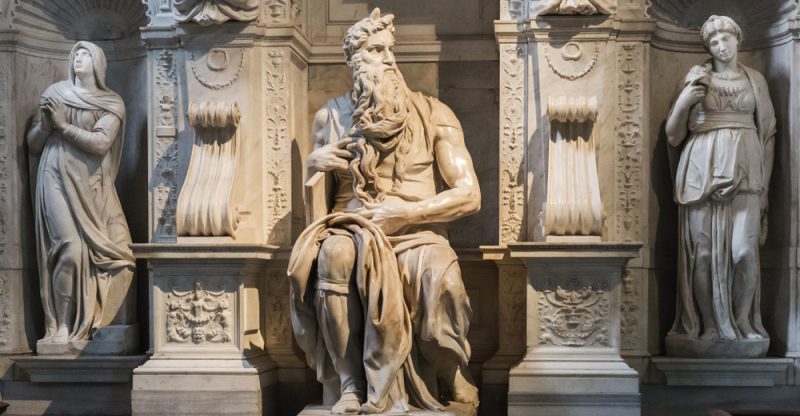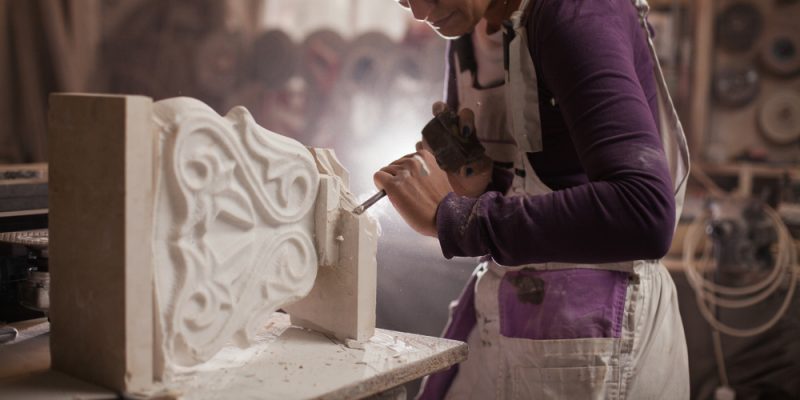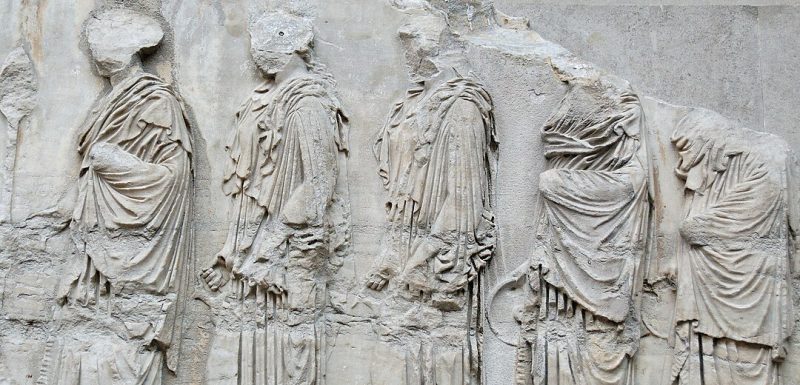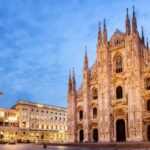We explain what sculpture is and what this artistic expression consists of. Features, techniques, function and uses.

(Michelangelo. Moses1515)
What is sculpture?
Sculpture (from Latin sculptsculpt) is a form of expression that consists of creating three-dimensional works of art (that is, with volume) using techniques such as carving, modeling, assembly, cutting, casting, welding or digital technologies.
Along with painting and drawing, sculpture is one of humanity's oldest artistic languages. The first known sculptures date back more than 38,000 years and they are simple figures, carved in materials such as bone or stone. They represented human figures, religious symbols or animals.
In the ancient civilizations of Egypt, Mesopotamia, Greece and Rome, sculpture was present in palaces, temples and tombs. Portraits of rulers, heroes and gods were also sculpted.
Sculpture is considered one of the fine arts, in addition to painting, music, cinema, literature, dance and architecture. The name sculpture is also given to the work that arises as a result of the artistic process.
Sculpture characteristics

Sculpture has accompanied humanity since the beginning of time and in different ways: as a ritual, ceremonial or utilitarian element, as a historical and commemorative monument or as a work of art. Its main features are:
occupies a volume
The sculpture's main characteristics are three-dimensionality and the use of space. Sculptural works are displayed in the physical environment, which means that They not only occupy space, but they create and determine it. They involve dimensional aspects such as height, width and depth and effects such as emptiness, perspective and scale.
Texture is essential
In the sculpture, The texture depends on the properties of the materials used. It can be smooth, rough, soft, rough, soft or hard and is physically felt through touch.
The texture plays with light, creating shine and shadows that enhance the shape and volume of the work. The artist uses it to create depth, movement or suggest effects that are not present in the original material.
Uses both natural and industrial raw materials
The working materials for sculpture can be very varied: natural (clay, stone, wood, marble, wax, plaster and metals such as bronze, iron, copper, silver and gold), or industrial.
As technology developed new products, sculpture began to use resins and plastics with new properties of resistance and flexibility and elements such as light and sound, which allowed the development of new sculptural styles.
He uses his techniques directly on the matter
Through technique, the sculptor shapes the material to create the work. There are numerous sculptural techniques depending on the intentions materials and means of the artist.
In wood or stone sculptures, the technique involves carving with instruments such as chisel and sandpaper, while for soft materials such as clay or plasticine, manual modeling is used. In the case of metal, the technique involves casting and the use of molds that are usually made of plaster, resin or rubber.
Other techniques are perforation, the articulation of different pieces and the incorporation of elements to create movement in the work.
Types of sculpture

(Phidias. Parthenon friezes (443-438 BC))
Some of the main types of sculpture are:
Round sculpture or free-standing sculpture
Freestanding sculptures, also called round sculptures, are independent sculptures, that is, they are not attached to any surface. They can be of any size or material, and are usually made with techniques such as carving, casting, assembly and modeling.
Famous examples of freestanding sculpture are The Thinker (1882) by Auguste Rodin (1840-1917) and Moses (1515) by Michelangelo (1475-1564).
relief sculpture
The relief sculptures are those that They are created by carving or molding images that protrude from a surface. Depending on the depth of the images, the relief can be high (more than half of the figure emerges), low (the figure emerges slightly) or medium (close to half of the figure emerges). Relief sculpture is used to decorate buildings and monuments or to relate historical events.
Famous examples of relief sculpture are Parthenon friezes (443-438 BC) of Phidias (431 BC) and the Doors of the Florence Baptistery (1425-1452), by Lorenzo Ghiberti 1378-1455).
statuary sculpture
Statuary sculpture is what Its central theme is the human figure, real or imaginary. It represents rulers, mythological figures, heroes, gods, muses or allegorical figures. Statues can be life-size (that is, on the scale of a person), larger or smaller than life-size.
Famous statues are the Venus de Milo (130-100 BC) and the Moai of Easter Island (13th-16th centuries).
kinetic sculpture
The kinetic sculpture is designed to move or give an optical sensation of movement. It can be propelled by a motor, by the wind or by the spectator. It is often used to create visual effects or to explore the ideas of movement and time.
Famous examples of kinetic sculpture are Mobile (1953) by Alexander Calder (1898-1976) and Caracas Sphere (1998) by Jesús Soto (1923-2005).
Site Specific Sculpture (site-specific)
It is a type of sculpture specially designed for a specific place and that establishes an unrepeatable and unique connection with the context in which it is located. Unlike traditional sculptures, which can be transported and displayed in different locations, site-specific sculptures are conceived and made to intervene and transform a particular location and cannot be moved without losing their meaning and artistic value.
An example of sculpture site-specific is the work The Floating Piers (2016) by the artist couple Christo (1935-2020) and Jeanne-Claude (1935-2009).
Function and uses of the sculpture
In addition to being an artistic expression, Sculpture has historically been put at the service of very diverse uses and functions. Sculptural art has had religious, commemorative, narrative, symbolic, didactic, critical, recreational, decorative, ritual, magical, funerary or cult functions.
It also acquired political functions: it was used to manifest the power of monarchies, preserve the memory of people or defend government projects. Through sculpture it is possible to know not only the artistic ideals of a time but also many aspects of a culture, civilization or society.
References
- Gombrich, E. (2016). The story of art. Phaidon Press.
- Hauser, A. (2015). Social history of art. Routledge.





